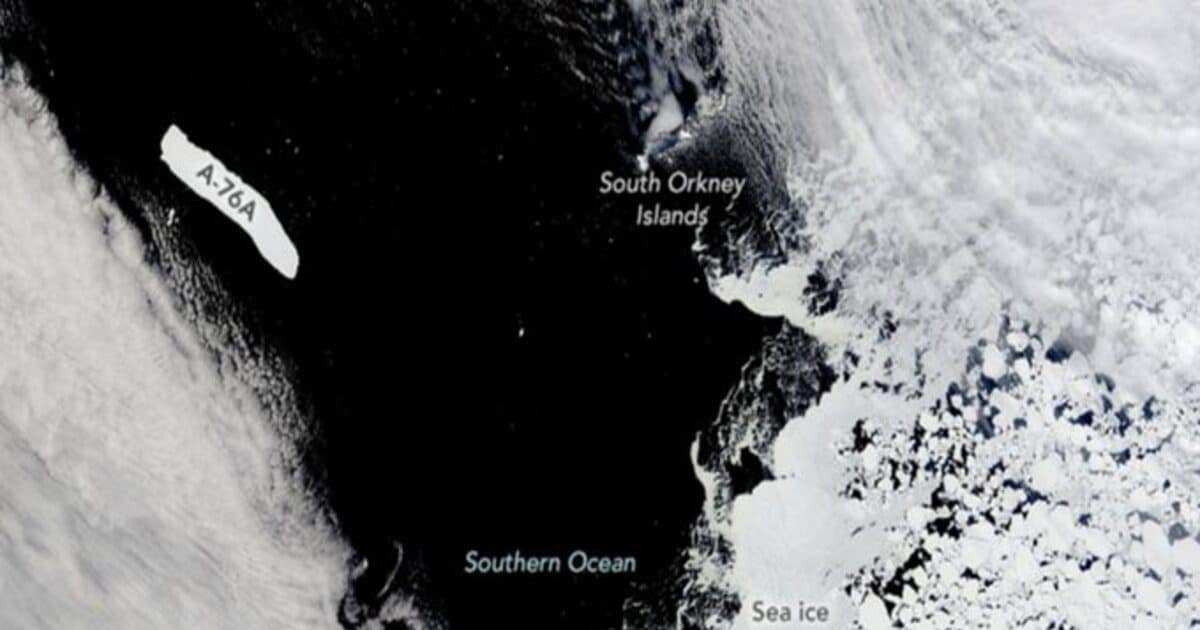
[ad_1]
Highlights
NASA said that the Antarctic iceberg A-76A may end soon.
This iceberg is 135 km long and 26 km wide.
One-third of glaciers in 50 World Heritage sites to disappear by 2050: UNESCO
washington, Amidst the ongoing United Nations Climate Summit in Egypt, the US space agency NASA has expressed its concern about the Antarctic iceberg A-76A, which was once the world’s largest glacier. In a satellite image released by NASA, the largest remaining piece of the Antarctic iceberg is seen to be submerging in the sea soon. According to the space agency, soon this glacier will melt and end.
According to the US National Ice Centre, the iceberg is 135 km long and 26 km wide, an area almost twice the size of London. This glacier is the largest part of the ‘Rhode Island’ shaped A-76, which was the previous largest glacier in the world. It broke off from the western part of the Rhone Ice Shelf in Antarctica in May 2021 and later split into three fragments 76A, 76B, and 76C. Iceberg 76A is the largest of these pieces.
According to a Live Science report, this glacier was flowing slowly along Antarctica for more than a year, but now its melting has accelerated and the iceberg is moving towards its end. Let us tell you that on October 31, the picture of this iceberg was taken by NASA’s Terra satellite. The glacier is currently floating between Cape Horn and South Shetland in South Africa, a narrow strait connecting the Pacific and Atlantic oceans. The picture was published online by NASA’s Earth Observatory on 4 November.
One third of glaciers will disappear by 2050
A UNESCO report says that if current conditions continue, one-third of the glaciers in the 50 World Heritage sites will disappear by 2050. In Africa, glaciers in all World Heritage sites will be gone by 2050, including Kilimanjaro National Park and Mount Kenya.
In Europe, some glaciers in the Pyrenees and Dolomites may also disappear after three decades. The organization further said that if the increase in temperature does not exceed 1.5 °C compared to the pre-industrial period, it is still possible to save glaciers in the remaining two-thirds of the sites. However, this target does not appear to be being met in any of the reports.
First read breaking news in Hindi News18 Hindi| Read today’s latest news, live news updates, most reliable Hindi news website News18 Hindi.
Tags: Climate Change, Glacier, Global warming, Nasa
FIRST PUBLISHED : November 12, 2022, 12:58 PM IST
[ad_2]
Source link





